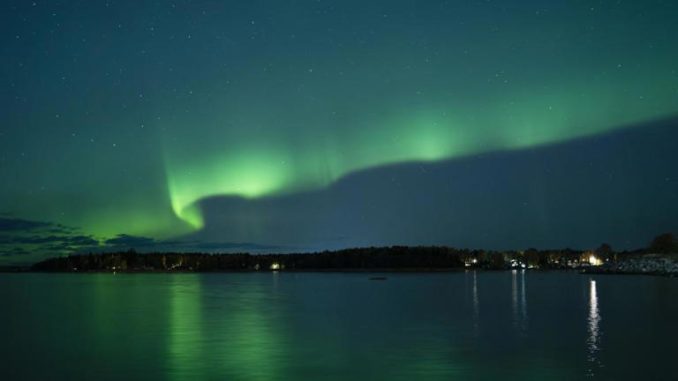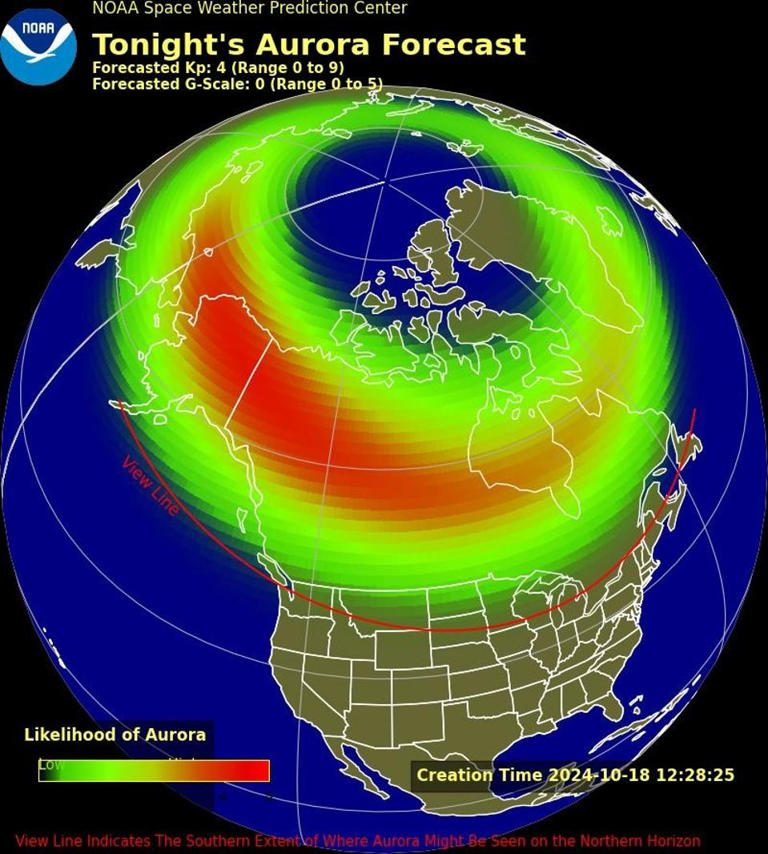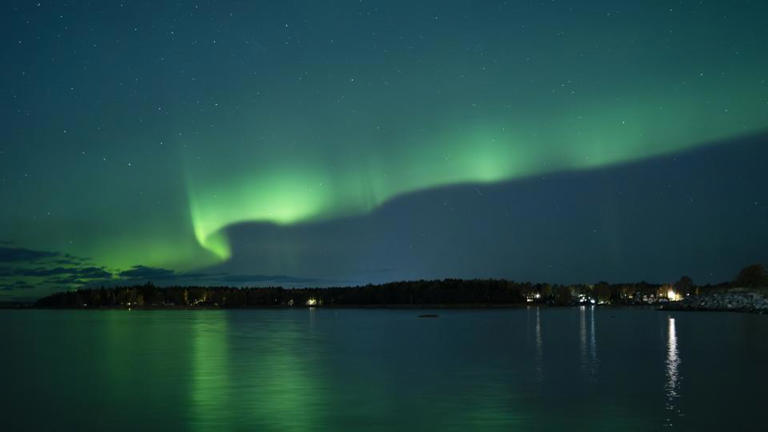
Aurora Alert: Northern Lights to dazzle us again tonight, Incoming solar storm to unleash auroras; Here’s Where Aurora Borealis Would Be Seen Tonight—And Saturday
The northern U.S. will have another chance at seeing the northern lights Friday night, with another opportunity likely coming Saturday, according to a National Oceanic and Atmospheric Administration forecast.
Key Facts
NOAA forecast a Kp index of four on a scale of nine for Friday night, and it’s likely to decrease to a four on Saturday, meaning aurora borealis could become brighter and be “quite pleasing to look at” for observers in the right areas.

There is a chance for a minor geomagnetic storm Friday after an eruption on the sun’s surface earlier this week, according to NOAA, increasing the chance for the northern lights to move farther south.
An X1.4 solar flare—classified by NASA as the most intense—resulted in a severe geomagnetic storm warning last week, posing potential threats to critical infrastructure, and NASA has forecast more geomagnetic storms leading up to 2026 as the sun’s activity has been busier than expected.
Where Will The Northern Lights Be Visible?
A higher chance of seeing aurora borealis is possible in Alaska and throughout northern and central Canada, while states closer to the Canadian border have a lower likelihood. Parts of Oregon, Idaho, Montana, North Dakota, South Dakota, Minnesota, Wisconsin, Michigan and Maine will have a chance to see the northern lights on Friday, according to NOAA. Fewer states are expected to have a chance on Saturday, including Oregon, North Dakota, Minnesota, Wisconsin and areas in northern Idaho, South Dakota and northern Michigan..

What’s The Best Way To See The Northern Lights?
The best time to see the northern lights is between 10 p.m. and 2 a.m. local time while at a high vantage point away from light pollution, according to NOAA.
What’s The Best Way To Photograph The Northern Lights?
If using a regular camera, Adobe recommends setting the focus to the farthest possible setting with a wide aperture, low shutter speed and high ISO value. For a smartphone, Visit Iceland, Iceland’s tourism website, suggests turning on night mode and selecting a lower shutter speed.
Key Background
There has been an increase in celestial events visible from the U.S. in recent weeks. The sun’s 11-year cycle, Solar Cycle 25, is expected to peak between late 2024 and early 2026, and a solar flare last week resulted in a severe geomagnetic storm, pushing aurora borealis as far south as Texas. That storm resulted in a warning from NOAA about its potential to disrupt critical infrastructure like power grids or GPS. The moon also reached its closest point to the Earth—the perigee—earlier this week, causing a supermoon, which is 14% larger than the typical full moon. The Tsuchinshan-ATLAS comet is also visible just over the western horizon during twilight hours, and it likely won’t return for another 80,000 years, according to NASA.
Leave a Reply